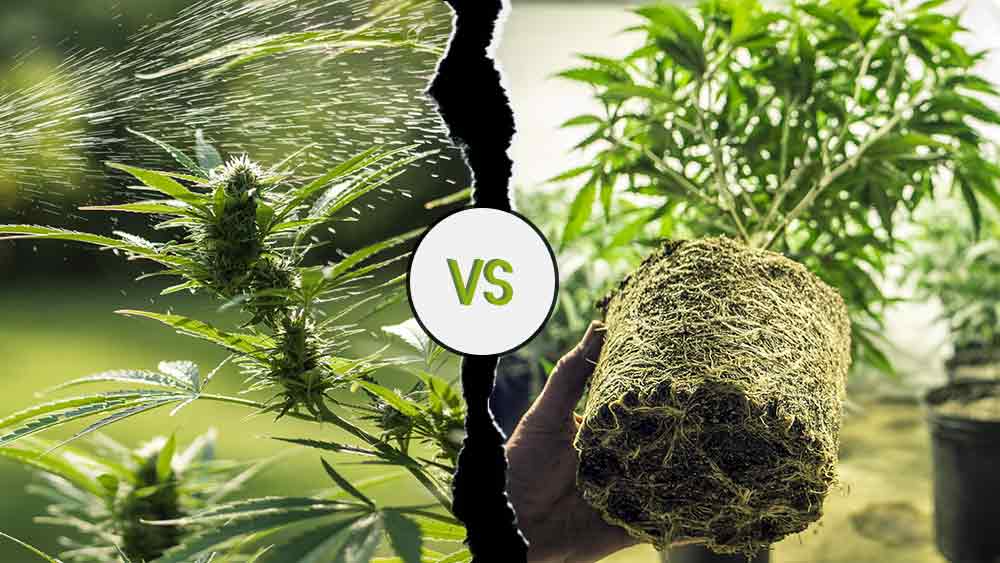With Canada’s legal cannabis market taking flight, it is not only consumers that are hit with product choices, but producers as well have to navigate how exactly to deliver the goods.
While indoor-grown cannabis is all the rage due to its consistency and strength, some companies are also embracing cannabis’ roots — growing it outdoors.
Cultivating cannabis outdoors has its benefits but also comes with risks that companies have to consider.
Greencamp talked to a few industry experts to learn exactly how outdoor weed stacks up against indoor cannabis, and why the great outdoors provides an allure some find hard to resist.
The rise of indoor growing
When you think of cannabis, there can be a romantic idea of it being grown in a field, soaking in the nutrients of the sun, just as nature intended, to get a nice final “organic” product.
Cannabis is a plant so of course it naturally grows outdoors, and has done so far before humans realized they could smoke it and reap the benefits of its effects.
The earliest evidence of cannabis use to get high was found in a western Chinese mountain range, where wild cannabis likely grew naturally around 2,500 years ago.
While cannabis can proliferate and grow like a weed outdoors, in modern times its growth has been regulated to indoors largely due to prohibition and the crackdown on drugs in the 20th century. Its growth was concealed, and indoor growing became the new standard for cannabis cultivation.
Now that cannabis is legal in Canada and its production has been industrialized, cannabis producers have the option to bring its cultivation back outdoors once again.
But will they take it?
Outdoor cannabis perfect for extracts
The first Canadian outdoor licence for growing cannabis was issued in May to a B.C.-based company Good Buds, and since then only a handful of licences have been distributed, including two to cannabis-giant Aurora.
It is a calculated business decision on whether to invest in outdoor growing, but one cannabis company that is going “all in” on outdoor cannabis is 48North.
48North has created what it calls the world’s largest licenced outdoor cannabis operation in Brant County, Ontario. The outpost, called “Good Farm,” is 3.7 million square feet and is expected to grow more than 40,000 kilograms of cannabis — effectively increasing the company’s cannabis output eight times from its current indoor capabilities.
Connor Whitworth, 48North’s Director of Corporate Affairs, said that the company decided to invest heavily in growing cannabis outdoors to lay a stake in the extract market.
48North thinks the extract market is the “place to be” after its success in the U.S. Eighty percent of cannabis sales in California have been from extract products, according to Whitworth.
New cannabis products made from extracts, such as concentrates, edibles and topicals, will be legal in Canada in October, and will likely hit store shelves in December.
Outdoor grown cannabis is especially suitable for the extract market given its relative low cost to produce and high yield, Whitworth explained, while still being a high-quality product.
Whitworth says the cost of producing one gram of outdoor cannabis is 25 cents, compared to an average of $2 a gram for indoor.
Indoor cultivation is more expensive due to its energy costs, and the setup and maintenance of the facility, while outdoor growing is cheaper due to being able to use the natural elements, such as the sun, for growth.
Whitworth also says outdoor growing is better for the environment due to the energy savings.
“If you want to be in the vape or cookie business or lotions, you better have the highest quality and lowest cost input, or you won’t be able to compete when this industry becomes a commodity,” he said. “The only way to do that is with outdoor cultivation.”
Growing weed outdoors has risks
Outdoor growing has its risks, though, which has led some companies to approach it more conservatively than 48North.
Emerald Health is one cannabis producer that has begun to dabble in outdoor growing with a small crop.
Vice President of Communications Allan Rewak says that Emerald Health recently got licenced for a 12-acre outdoor growing facility in metro Vancouver, but it is a relatively small crop.
“We’re taking a very measured and cautious approach [to outdoor growing] and making sure we get it right at a relatively small scale first, and then we will expand based on our success,” he said. “Other companies are betting more heavily on it, which carries a bit more risk but also potentially more reward if they can bring in good crops.”
While indoor growers can basically play God and control conditions, such as air circulation and temperature, down to the hair, outdoor growing is more precarious. It is largely reliant on the weather, and output can be affected by conditions such as the amount of sunlight or rain received, according to Rewak.
Outdoor growing also only has a small window of the year to produce crops to supply for the whole season due to Canada’s weather conditions — so you can be sure growers will be praying to the harvest gods for good conditions — as opposed to indoor growing, which can be done year-round.
Overall, Rewak says very few companies that have scaled would only be looking at one growing method, but a mix of outdoor, indoor and greenhouse.
In addition to its small outdoor crop, Emerald Health also recently announced a joint venture with Pure Sunfarms to create a 1.1 million square foot greenhouse for cannabis cultivation in B.C., and is completing the build-out of its nearly 90,000 square feet indoor facility in Quebec.
“We and many other companies, such as Canopy or Aurora, are looking at multiple different methodologies as part of a constellation of supply,” he said.
Outdoor dried flowers vs. indoor dried flowers
So how does the end product for outdoor grown cannabis compare to indoor-grown?
According to Joey Bedard-Brunet, founder and CEO of cannabis agriculture company ClearWater CannGrow Inc., indoor cannabis is ultimately the better smoking flower.
Bedard-Brunet recently made a deal with BevCanna to lead their 130-acre outdoor operation in Osoyoos, B.C. The cannabis cultivated there will be used in the company’s evolving line of cannabis-infused beverages.
Given Bedard-Brunet’s passion for outdoor growing, it was surprising to hear he picked indoor cannabis as the dried flower winner.
“[Outdoor cannabis] involves more leaves in it, is not as pretty, we don’t trim every plant like you would indoor,” he said. “They are high quality, well-grown high THC plants, but not necessarily the look and feel that you would want in the cannabis jar that you buy from the store.”
He explained that because outdoor flower is primarily produced for creating extracts, the ultimate aim of outdoor crops is for the highest “biomass,” meaning the amount that is produced that is actually useable, rather than for smokeability or looks.
That doesn’t mean outdoor cannabis couldn’t compete with indoor, though.
Bedard-Brunet asserts that more manual labour could be put into outdoor cultivation in a smaller crop to create competitive bud, but it would raise costs.
48North will be offering an outdoor dried bud that will come from 10 percent of its outdoor crop, with the other 90 percent going to the extract market.
To Bedard-Brunet, companies are ultimately better off sticking to indoors growing for the dried flower market due to its consistency and the fine-tuning that can be more easily achieved indoors.
He also mentioned that public perception is that indoor cannabis is superior, which may be making companies hesitant to offer outdoor dried flower if consumers aren’t interested.
Bedard-Brunet admits though that that perception could one day change. Outdoor cannabis does have its own appeals that could be marketed, such as that it is sun-grown, organic, better for the environment and returns to the roots of cannabis cultivation, which could appeal to consumers if there is a concerted marketing effort.
[Quote] “The consumer is switching to wanting something that is as close to natural as possible,” he said. “I think most consumers would agree that being outside in the country is a lot more natural than the big old brick building in an industrial park.”
48North is banking on that appeal.
“[Outdoors] is where the plant was originally intended to grow,” Whitworth said. “Cannabis only went indoors because it was illegal. We’re bringing cannabis back to grow where it belongs, which is outdoors.”


![How to Grow Weed Indoors for Beginners [Follow-Along Guide]](https://greencamp.com/wp-content/uploads/2017/05/how-to-grow-weed-200x200.jpg)





